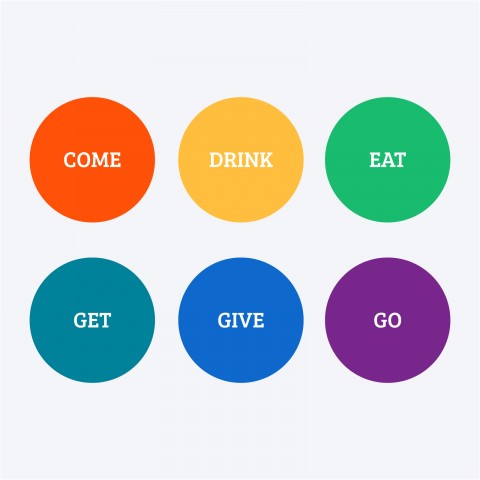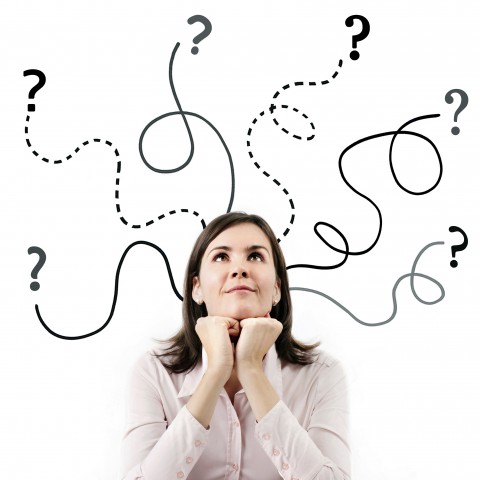
Are you thinking about learning Dutch and wondering what to study first? Or are you already studying Dutch but getting a bit lost in the Dutch grammar?
Then you’re in the right place! This comprehensive Dutch grammar overview from DutchPod101 is the perfect place to start your studies or refresh yourself on the basics.
This one page contains a breakdown of the concepts of Dutch grammar you really need to know, including the more difficult aspects. You’ll walk away from this lesson with a greater understanding of Dutch, from word types and tenses to tips on avoiding the most common Dutch grammar mistakes.
It may be a challenge, but we know you can face it with the best tool in town!
 Table of Contents
Table of Contents
- General Rules
- Verbs & Tenses
- Dutch Nouns
- Gender & Articles
- Avoid the Most Common Dutch Grammar Mistakes
- How DutchPod101 Can Help You Learn More Dutch
1. General Rules
Let’s start on a positive note: From a grammatical perspective, the Dutch language has a lot in common with both English and German. It has similar types of words, a lot of loanwords from these languages (but also from others, such as French and Hebrew; nearly one-third of the Dutch language is borrowed), and many similar grammatical structures.
As you can see, knowing either English or German will help you a lot when studying Dutch grammar.
Dutch Word Types
Like most Germanic languages, Dutch has the following word types:
- Articles (indefinite or definite):
De kat (“The cat”)
- Nouns:
De kat (“The cat“)
- Verbs:
Wij lopen. (“We walk.”)
- Adjectives (used to describe a noun):
De kleine kat (“The little cat”)
- Adverbs (used to describe a verb, an adjective, or another adverb):
Ik ga morgen naar school. (“I will go to school tomorrow.”) - Pronouns (singular or plural):
Wij lopen. (“We walk.”) - Conjunctions (used to connect words or phrases)
Een hond en een kat (“A dog and a cat”) - Prepositions (followed by nouns, verbs, or pronouns)
De hond is in het huis. (“The dog is in the house.”)
So when you compare Dutch grammar with English grammar, you can see that all of these word types have a direct equivalent in English.
Dutch Word Order
In Dutch grammar, the word order for the most basic sentences consists of a subject and a verb:
Subject + Verb
- Ik praat. (“I talk.”)
- De jongen verft. (“The boy paints.”)
In Dutch, the subject is almost never dropped; the sentence structure is simply not complete without the subject.
- → How do you make a negative sentence? Place the word niet (“not”) AFTER the verb.
So that’s step one. Let’s make it a bit more complicated by adding an object. The (direct) object in Dutch is usually placed right after the verb.
Subject + Verb + (Direct) Object
- Ik praat met mijn vader. (“I talk to my father.”)
- De jongen verft de deur. (“The boy paints the door.”)
These are direct objects because they’re a person or thing that is directly affected by the actions of the subject. But in Dutch, there are also indirect objects, which are a person or thing that is somehow involved in the action.
The indirect object can be placed after the direct object.
Subject + Verb + Direct object + Indirect object
- Ik praat met mijn vader over ons huis. (“I talk to my father about our home.”)
- De jongen verft de deur met verf. (“The boy paints the door with paint.”)
DutchPod101 also has a comprehensive Dutch Word Order Guide. Make sure to check it out for more detailed information on how this works!
2. Verbs & Tenses

In Dutch grammar, verbs conjugate for number (singular and plural) and person (first, second, and third person), just like they do in English. For reference, here’s a table of the grammatical persons in singular and plural:
| Singular | Plural | |
| First Person | Ik (“I”) | Wij (“We”) |
| Second Person | Jij (“You,” casual) U (“You,” formal) | Jullie (“You”) |
| Third Person | Hij (“He”) Zij (“She”) Het (“It”) | Zij (“They”) |
It may be a bit overwhelming at first, but let’s just go through the basics, step-by-step.
The Infinitive
What’s the infinitive in Dutch? Well, a Dutch infinitive verb is the plural and present tense of a verb (also known as the entire verb). They usually end with -en, as in lopen (“to walk”).
Before the Dutch infinitive, you can almost always put Ik kan (“I can”):
- Ik kan fietsen.
“I can cycle.”
or
- Ik kan werken.
“I can work.”
Conjugation Basics
Let’s give you a quick overview of the eight basic tenses that exist in Dutch.
There are two main tenses: the present and the past.
Then, there are six “semi-tenses” that appear when these two main tenses (present or past) interact with a mood (factual or hypothetical) or an aspect (temporary or continuing).
| The eight tenses of the verb Praten (“To talk”) | ||
| 1. Onvoltooid tegenwoordige tijd (“Present Simple”) | Ik praat | “I talk” |
| 2. Onvoltooid verleden tijd (“Past Simple”) | Ik praatte | “I talked” |
| 3. Voltooid tegenwoordige tijd (“Present Perfect”) | Ik heb gepraat | “I have talked” |
| 4. Voltooid verleden tijd (“Past Perfect”) | Ik had gepraat | “I had talked” |
| 5. Onvoltooid tegenwoordige toekomende tijd (“Future Simple”) | Ik zal praten | “I will talk” |
| 6. Voltooid tegenwoordige toekomende tijd (“Future Perfect”) | Ik zal hebben gepraat | “I will have talked” |
| 7. Onvoltooid verleden toekomende tijd (“Conditional”) | Ik zou praten | “I would talk” |
| 8. Voltooid verleden toekomende tijd (“Conditional Perfect”) | Ik zou hebben gepraat | “I would have talked” |
Please note that praten is a regular verb, meaning it follows the normal conjugation rules. Things get a bit more complicated when you throw irregular verbs into the mix!
The 2 Most Important Verbs
Now that you know the basics of Dutch conjugation, let’s have a look at two crucial verbs. The first one, unfortunately, is irregular and doesn’t follow normal conjugation rules:
- Zijn (“To be”)
Ik ben (“I am”) / Jij bent (“You are,” singular) / Hij is (“He is”) / Wij zijn (“We are”) / Jullie zijn (“You are,” plural) / Zij zijn (“They are”)
For example: Ik ben gelukkig. (“I’m happy.”)
The second one, luckily, is a regular verb:
- Hebben (“To have”)
Ik heb (“I have”) / Jij hebt (“You have,” singular) / Hij heeft (“He has”) / Wij hebben (“We have”) / Jullie hebben (“You have,” plural) / Zij hebben (“They have”)
For example: Wij hebben een kat. (“We have a cat.”)
Want to learn more? Have a look at our vocabulary list of the 50 Most Common Verbs and our Beginner’s Guide to Dutch Conjugation.
3. Dutch Nouns
In the Dutch language, a given noun can be singular or plural, and each noun has a grammatical gender. The gender isn’t overtly marked, so it has to be learned for every case. However, we’ll give you some tips and tricks on how to recognize the gender (and thus, the correct article) in the next section.
The Dutch Plural

The Dutch plural is made by changing the end of the word, similarly to how English plurals are formed. The most common way to make a noun plural is by adding -en or -s.
Most of the time, we add -en:
| Singular | Plural |
| Kat (“Cat”) | Katten (“Cats”) |
| Kus (“Kiss”) | Kussen (“Kisses”) |
However, sometimes we add -s. For example, when the word ends with an -en, -el, -em, or -er:
| Singular | Plural |
| Tante (“Aunt”) | Tantes (“Aunts”) |
| Appel (“Apple”) | Appels (“Apples”) |
When a relatively modern noun ends in a long vowel, an -‘s (with an apostrophe) is often used in the plural. What if they end in -ee or -é? Then no apostrophe is used. Older words generally use -en or -ën (with diaeresis).
| Singular | Plural |
| Baby (“Baby”) | Baby´s (“Babies”) |
| Café (“Bar”) | Cafés (“Bars”) |
| Ree (“Deer”) | Reeën (“Deer”) |
But there are also other, less common endings for plural nouns: -eren and -a.
- Het kind (“The child”) is singular. / De kinderen (“The children”) is plural.
Het museum (“The museum”) is singular. / De musea (“The museums”) is plural.
There are more rules and exceptions, but let’s just stick with the basics for now.
The Dutch Diminutive
The Dutch love to use the diminutive, and not only for small things. Really, it can be used for anything that’s cute, funny, sweet, young, old, or even annoying.
The basic formula for the diminutive is noun + je:
- Het kindje (“The little child”)
Only a -je is added when the word ends with: -b, -c, -d, -f, -g, -ch, -k, -p, -q, -s, -sj, -t, -v, -x, or -z.
However, sometimes the diminutive is formed with -tje, -etje, -pje, or -kje.
Is the vowel of the last syllable both short and stressed, and followed by a sonorant? Then use -etje:
- Het dingetje (“The little thing”)
- Het vriendinnetje (“The little girlfriend”)
In almost all other cases, the basic form -tje is used:
- Het vrouwtje (“The little woman”)
- Het schooltje (“The little school”)

4. Gender & Articles
De and het are both definite articles that mean “the.” The masculine and feminine words generally get de, while all neuter words get het. Let’s have a look:
| Masculine | Feminine | Neuter | |
| Definite singular | De man (“The man”) | De vrouw (“The woman”) | Het huis (“The house”) |
| Definite plural | De mannen (“The men”) | De vrouwen (“The women”) | De huizen (“The houses”) |
| Indefinite singular | Een man (“A man”) | Een vrouw (“A woman”) | Een huis (“A house”) |
However, there’s not always a good explanation for why a Dutch word has a specific gender—not to mention that Dutch words don’t have a clear gender indication. Luckily, there are a few indications that can help you:
- All words referring to persons (individuals) are de-words.
- de voetballer (“the football player”) / de president (“the president”)
- All plural words get de.
- de katten (“the cats”) / de stoelen (“the chairs”)
- All words made smaller with (e)(t/d)je are neuter.
- het kindje (“the little child”) / het bloemetje (“the little flower”)
- Words ending with -el or -er are often de-words.
- de tafel (“the table”) / de bakker (“the baker”)
- All infinitive verbs that are used as a noun have the neuter het.
- het fietsen (“the cycling”) / het schrijven (“the writing”)
- Words with standard prefixes like ge-, ver-, ont-, and be- and without an -ing ending are neuter.
- het verhaal (“the story”) / het ontslag (“the resignation”)
- Almost all words with the standard suffixes -ing, -ij, -ie, -e, and -heid are feminine.
- de politie (“the police”) / de schoonheid (“the beauty”) / de drukkerij (“the printing company”) / de dame (“the lady”)
5. Avoid the Most Common Dutch Grammar Mistakes
Are you feeling confident with the Dutch grammar basics so far?
If so, great! And if not, don’t worry; you’ll get the hang of it with time.
Before we close, let’s have a look at some of the most common Dutch grammar mistakes that learners make. Knowing what to watch for will greatly help you come to grips with the language!
Dt-ending
Although the Dutch present tense might look easy, one of the most common Dutch grammar mistakes is to misuse the dt-ending. The dt-ending is used on verbs that have a -d root ending, when they’re used with certain subjects.
So how do you get the root of your verb? You simply remove the -en ending of the infinitive (the plural and present tense of the verb). So in this case, fiets is the root of fietsen and antwoord of antwoorden.
| Subject | Fietsen present tense (“to cycle”) | Antwoorden present tense (“to reply”) |
| Ik (“I”) | fiets | antwoord |
| Jij, u (“You”) | fietst | antwoordt |
| Hij, zij, het (“He, she, it”) | fietst | antwoordt |
| Wij (“We”) | fietsen | antwoorden |
| Zij (“They”) | fietsen | antwoorden |
As you can see, in the verb antwoorden, because the root ends with a -d, it becomes -dt in the “You” and “He, she, it” subjects. And in fietsen, because the root ends with an -s (and not a -d), only a -t is added.
It may be good to look over a few different conjugation charts to really get this concept ingrained in your memory!
Yes/No Questions

One thing that tends to be difficult about Dutch grammar for English speakers is how similar the two languages are. This can make it tempting to apply English grammar rules to Dutch, even when it’s incorrect to do so. For example, using the Dutch word doe (“to do”) in yes/no questions is grammatically incorrect; the Dutch don’t use the auxiliary “do” in questions.
Let’s see some examples:
Example 1: “Do you like dancing?”
- Correct: Houd je van dansen?
- Wrong: Doe jij houden van dansen?
Example 2: “Do you want to marry me?”
- Correct: Wil je met me trouwen?
- Wrong: Doe jij met me willen trouwen?
Let’s have a look at the correct word order:
Working verb + Subject + (Object +) Other verb ?
Some simple examples:
- Kom je? (“Are you coming?”)
- Werkt hij? (“Does he work?”)
For more question examples, don’t forget to have a look at our Top 25 Questions You Need to Know!
Splitting Verbs
The Dutch love to use a lot of verbs in their sentences and split them: one part of the verb will be at the beginning of the sentence and other parts will be at the end.
So try to be aware of this. Be cautious when using the present perfect, past perfect, future simple, future perfect, conditional, and conditional perfect verbs, as you may need to add a verb at the end of the sentence.
Let’s have a look at the sentence structure for these tenses:
Subject + Working verb + Adverb + (Adjective +) Direct object + (Adjective +) (Indirect object +) Other verb
Here’s an example for each of the six Dutch tenses that can require a verb at the end of the sentence:
- Present perfect: De jongen heeft in het huis de gele deur met zwarte verf geverfd. (“The boy has painted the yellow door in the house with black paint.”)
- Past perfect: De jongen had in het huis de gele deur met zwarte verf geverfd. (“The boy had painted the yellow door in the house with black paint.”)
- Future simple: De jongen zal in het huis de gele deur met zwarte verf verven. (“The boy will paint the yellow door in the house with black paint.”)
- Future perfect: De jongen zal in het huis de gele deur met zwarte verf hebben geverfd. (“The boy will have painted the yellow door in the house with black paint.”)
- Conditional: De jongen zou in het huis de gele deur met zwarte verf verven. (“The boy would paint the yellow door in the house with black paint.”)
- Conditional perfect: De jongen zou in het huis de gele deur met zwarte verf hebben geverfd. (“The boy would have painted the yellow door in the house with black paint.”)
Are you just beginning your Dutch studies? Then don’t worry too much about this! First, have a look at this useful lesson series on the Top 10 Sentence Patterns for Beginners.
6. How DutchPod101 Can Help You Learn More Dutch
In this Dutch grammar rules guide, you’ve learned a lot of essential Dutch grammar concepts, from general rules to some useful tips on how to avoid common Dutch grammar mistakes.
Whether you’re just starting Dutch or strengthening your knowledge, you can use this overview as a useful guide whenever you need quick access to the basic Dutch grammar rules. Did we forget any important Dutch grammar topic you would like to learn more about?
Make sure to explore DutchPod101.com! Boost your studies with our useful vocabulary lists and plenty of other free resources to practice your language skills with. We are the best place to learn about Dutch grammar online!
Would you like some personal one-on-one coaching? Then check out our Premium PLUS MyTeacher service. We’ll connect you with a private teacher who will help you improve your Dutch grammar through interactive exercises and personalized feedback.
Happy learning!










